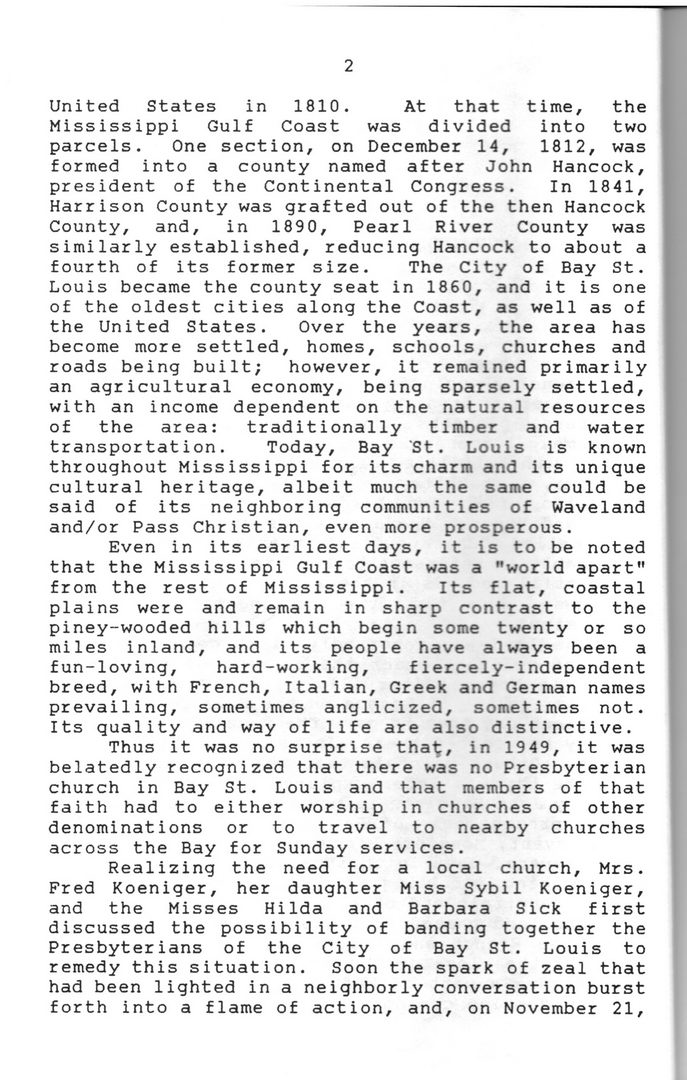This text was obtained via automated optical character recognition.
It has not been edited and may therefore contain several errors.
2 United States in 1810. At that time, the Mississippi Gulf Coast was divided into two parcels. One section, on December 14, 1812, was formed into a county named after John Hancock, president of the Continental Congress. In 1841, Harrison County was grafted out of the then Hancock County, and, in 1890, Pearl River County was similarly established, reducing Hancock to about a fourth of its former size. The City of Bay St. Louis became the county seat in 1860, and it is one of the oldest cities along the Coast, as well as of the United States. Over the years, the area has become more settled, homes, schools, churches and roads being built; however, it remained primarily an agricultural economy, being sparsely settled, with an income dependent on the natural resources of the area: traditionally timber and water transportation. Today, Bay St. Louis is known throughout Mississippi for its charm and its unique cultural heritage, albeit much the same could be said of its neighboring communities of Waveland and/or Pass Christian, even more prosperous. Even in its earliest days, it is to be noted that the Mississippi Gulf Coast was a "world apart" from the rest of Mississippi. Its flat, coastal plains were and remain in sharp contrast to the piney-wooded hills which begin some twenty or so miles inland, and its people have always been a fun-loving, hard-working, fiercely-independent breed, with French, Italian, Greek and German names prevailing, sometimes anglicized, sometimes not. Its quality and way of life are also distinctive. Thus it was no surprise tha^, in 1949, it was belatedly recognized that there was no Presbyterian church in Bay St. Louis and that members of that faith had to either worship in churches of other denominations or to travel to nearby churches across the Bay for Sunday services. Realizing the need for a local church, Mrs. Fred Koeniger, her daughter Miss Sybil Koeniger, and the Misses Hilda and Barbara Sick first discussed the possibility of banding together the Presbyterians of the City of Bay St. Louis to remedy this situation. Soon the spark of zeal that had been lighted in a neighborly conversation burst forth into a flame of action, and, on November 21,

First Presbyterian Church History-of-the-First-Presbyterian-Church-06